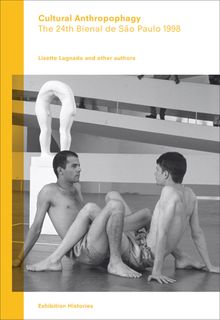| |||||||||||||||||||||||||
CURATOR INDEX
|
|
in stock $27.50 Free Shipping UPS GROUND IN THE CONTINENTAL U.S. |
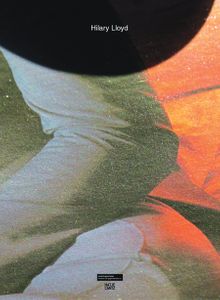 Hilary Lloyd
Hilary Lloyd
Published by Hatje Cantz.
Edited by Nikola Dietrich. Foreword by Nikola Dietrich, Scott C. Weaver. Text by Kirsty Bell, Sabeth Buchmann, Pablo Lafuente.
PUBLISHER
Hatje Cantz
BOOK FORMAT
Paperback, 7.75 x 10.25 in. / 216 pgs / 138 color.
PUBLISHING STATUS
Pub Date 2/28/2013
Out of stock indefinitely
DISTRIBUTION
D.A.P. Exclusive
Catalog: SPRING 2013 p. 201
PRODUCT DETAILS
ISBN 9783775732994 SDNR30
List Price: $60.00 CAD $79.00
AVAILABILITY
Not available
STATUS: Out of stock indefinitely. |
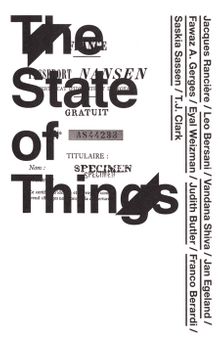 The State of Things
The State of Things
Published by Office for Contemporary Art Norway OCA.
Edited by Marta Kuzma, Pablo Lafuente, Peter Osborne. Introduction by Angela Vettese. Text by Jacques Ranciere, Leo Bersani, Vandana Shiva, Jan Egeland, Fawaz A. Gerges, Eyal Weizman, Judith Butler, Franco Berardi, Saskia Sassen, T.J. Clark.
PUBLISHER
Office for Contemporary Art Norway OCA
BOOK FORMAT
Paperback, 4 x 7 in. / 272 pgs / 6 bw.
PUBLISHING STATUS
Pub Date 9/30/2013
Out of print
DISTRIBUTION
D.A.P. Exclusive
Catalog: FALL 2013 p. 152
PRODUCT DETAILS
ISBN 9788292495186 TRADE
List Price: $21.95 CAD $30.50
AVAILABILITY
Not available
STATUS: Out of print | 00/00/00 For assistance locating a copy, please see our list of recommended out of print specialists |
 Making Art Global (Part 2)
Making Art Global (Part 2)
'Magiciens de la Terre' 1989
Published by Afterall Books.
Introduction by Pablo Lafuente. Text by Lucy Steeds, Jean-Marc Poinsot, Rasheed Araeen, Jean Fisher, Thomas McEvilley, Jean-Hubert Martin, Gayatri Chakravorty Spivak, Frédéric Bruly Bouabré, Barbara Kruger. Interview with Jean-Hubert Martin, Benjamin H.D. Buchloh, Alfredo Jaar, Francisco Godoy Vega.
PUBLISHER
Afterall Books
BOOK FORMAT
Paperback, 6 x 8 in. / 304 pgs / 107 color / 28 bw.
PUBLISHING STATUS
Pub Date 9/30/2013
Out of print
DISTRIBUTION
D.A.P. Exclusive
Catalog: FALL 2013 p. 152
PRODUCT DETAILS
ISBN 9783863352585 TRADE
List Price: $27.50 CAD $37.50
AVAILABILITY
Not available
STATUS: Out of print | 00/00/00 For assistance locating a copy, please see our list of recommended out of print specialists |
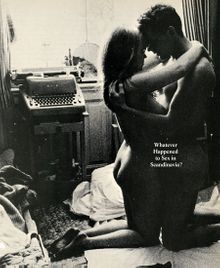 Whatever Happened to Sex in Scandinavia?
Whatever Happened to Sex in Scandinavia?
Published by Walther König, Köln.
Edited by Marta Kuzma, Pablo Lafuente. Introduction by Marta Kuzma.
Published with OCA.
Whatever Happened to Sex in Scandinavia? is a reader that brings together essays, artists' writings and works, and countercultural publications to examine the juncture of the political and the erotic during the 1960s and 70s. Adopting as its starting point the postwar perception of Scandinavia as a socialist utopia of sexual freedom, it explores how the avant-garde artistic and cultural production of the time gravitated towards sexual and political liberation. Whatever Happened to Sex in Scandinavia? is the conclusion of a four-year research project, and includes many texts published in English here for the first time, by philosophers, artists, psychologists and theorists such as Knut Ove Arntzen, Stan Brakhage, Norman O. Brown, Valie Export, Öyvind Fahlström, Herbert Marcuse, Jonas Mekas, Henry Miller, Juliet Mitchell, Katti Anker Møller, Jørgen Nash, Håvard Friis Nilsen, Claes Oldenburg, Elise Ottesen-Jensen, Wilhelm Reich, Yvonne Rainer, Jacqueline Rose, Barney Rosset, Barbara Rubin, Jens Jørgen Thorsen and Otto Weininger.
PUBLISHER
Walther König, Köln
BOOK FORMAT
Paperback, 8.5 x 11 in. / 525 pgs / 282 color.
PUBLISHING STATUS
Pub Date 3/31/2012
Out of stock indefinitely
DISTRIBUTION
D.A.P. Exclusive
Catalog: SPRING 2012 p. 86
PRODUCT DETAILS
ISBN 9783863350680 TRADE
List Price: $54.95 CAD $72.50
AVAILABILITY
Not available
STATUS: Out of stock indefinitely. |
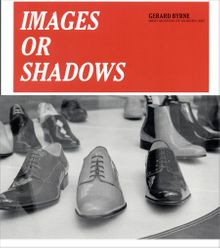 Gerard Byrne: Images or Shadows
Gerard Byrne: Images or Shadows
Published by Irish Museum of Modern Art.
Edited by Pablo LaFuente. Text by Enrique Juncosa, Sven Lütticken.
PUBLISHER
Irish Museum of Modern Art
BOOK FORMAT
Paperback, 8.75 x 10.25 in. / 224 pgs / 60 color / 40 bw.
PUBLISHING STATUS
Pub Date 9/30/2011
Out of print
DISTRIBUTION
D.A.P. Exclusive
Catalog: FALL 2011 p. 83
PRODUCT DETAILS
ISBN 9781907020612 TRADE
List Price: $45.00 CAD $60.00 GBP £40.00
AVAILABILITY
Not available
STATUS: Out of print | 00/00/00 For assistance locating a copy, please see our list of recommended out of print specialists |
